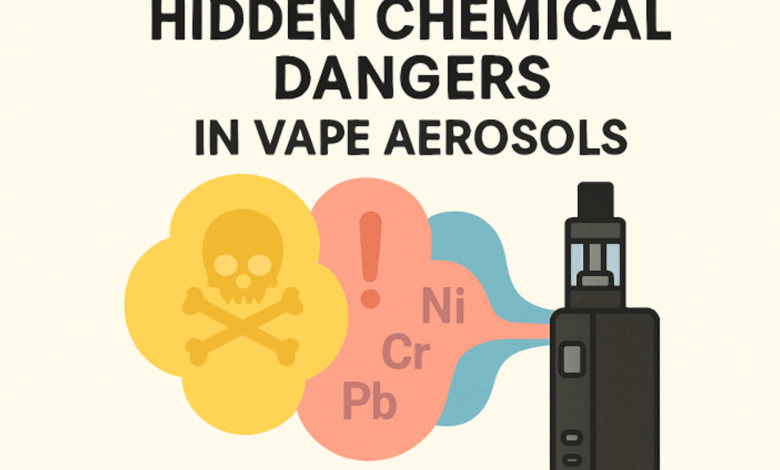The Chemical Truth: Why Vapes Aren’t a Safer Bet

Introduction
Vaping has witnessed a meteoric rise, promoted heavily as a less harmful substitute for traditional tobacco. But recent findings increasingly debunk this image, showing that the chemical realities of e-cigarettes may be at odds with perceived safety. For an in-depth look at these misconceptions, see Why vapes aren’t a safe smoking alternative. These revelations are shaping a new understanding around the health threats posed by vaping products, challenging both users and healthcare advocates to confront uncomfortable truths early in the evolving story of vaping.
Many users, especially young adults and teens, turn to vaping with the impression that it is a regulated and less dangerous habit. Yet, the risks hidden in their chemical design and byproducts expose users—and sometimes even their families and communities—to serious harm that is only just coming to light.
Hidden Dangers in Vape Aerosols
Disposable and refillable vape devices contain not just nicotine but also a cocktail of heavy metals, including lead, cadmium, and nickel. Research from Johns Hopkins University reported that some disposable vapes release extremely high concentrations of lead levels comparable to what one would inhale by smoking 20 packs of cigarettes in just one day. This is a staggering statistic for a product often marketed as a safer route to nicotine consumption. Young users, the fastest-growing group of vapers, are particularly vulnerable to the toxic effects of these metals, which can disrupt neurological development and cause long-term damage to organs.
Apart from metals that leach from heating coils and device casings, vape aerosols contain volatile organic compounds (VOCs) and fine particulates that can lodge deep within the lungs. These invisible dangers often slip under the radar but are equally culpable in causing respiratory infections and inflammatory responses.
See also: What Electrical Glitches May Mean for Your SUV’s Long-Term Health
Flavorings and Chemical Reactions
The appeal of vaping is often tied to its abundance of flavors, from fruity to dessert-inspired varieties. However, these flavoring agents are not as benign as they appear. When heated, common ingredients such as diacetyl (used in buttery flavors) or benzaldehyde (used in cherry flavors) can break down into other chemicals linked to lung disease and cell mutation. For example, diacetyl has been causally linked to an incurable respiratory condition called bronchiolitis obliterans or “popcorn lung,” previously observed in factory workers exposed to the same chemical.
Regrettably, the regulatory system has failed to keep pace with the innovation of new flavors and additives. Many substances in e-liquids have not been evaluated for inhalation safety, making a comprehensive risk assessment nearly impossible. Each puff, therefore, is a chemical experiment with potentially harmful outcomes for the user’s lungs, heart, and even DNA.
Nicotine and Synthetic Alternatives
Nicotine, in all its forms, is a well-known addictive substance. However, the story of vaping devices doesn’t end there. In an effort to evade existing tobacco laws, some manufacturers have introduced synthetic analogs like 6-methyl nicotine, which can bind more strongly to brain receptors, increasing both the addictive potential and the risk of long-term dependency. According to the CDC, nicotine exposure during adolescence can harm brain development and increase susceptibility to other addictions later in life.
Crucially, these new synthetic additives often fall outside the scope of current regulatory measures. Until laws catch up, users are left exposed not only to nicotine’s addictive grasp but also to unknown long-term impacts from entirely new chemicals.
Environmental Impact of Disposable Vapes
With the surge in disposable vape usage comes a new and entirely distinct waste crisis. These products are primarily assembled from non-recyclable plastics, lithium batteries, and circuit boards, which are often improperly disposed of. Millions of these devices end up in landfills and waterways annually, leaching heavy metals and microplastics into fragile ecosystems.
This waste contributes to environmental pollution, resource depletion, and growing carbon footprints associated with consumption. With so few infrastructure solutions for safe disposal, vaping is quickly becoming as much an ecological concern as it is a public health one.
Secondhand Exposure Risks
A persistent myth is that vape clouds are merely harmless water vapor. In reality, e-cigarette aerosols release ultrafine particles, invisible to the naked eye, alongside chemicals such as formaldehyde, acrolein, and acetaldehyde, which linger in enclosed spaces. Studies published in The New England Journal of Medicine confirm that bystanders, including children, are exposed to these chemicals, which may precipitate asthma attacks, irritation, and respiratory illness even in non-users.
As vaping continues to increase in popularity, these risks will only amplify, especially in homes, schools, and public spaces where vulnerable populations reside.
Regulatory Challenges and Public Health
Vaping technology has evolved at a rapid pace, far outstripping the ability of regulators to monitor and evaluate every new product. The U.S. Food and Drug Administration (FDA), for instance, faces challenges in keeping up with the hundreds of new vapes and e-liquids entering the market each year. Many of these products contain ingredients and device modifications that have not undergone rigorous safety reviews.
Public health organizations are now calling for better oversight, more stringent product testing, and comprehensive educational campaigns to counteract the marketing narratives that position vaping as a harmless alternative to smoking. Until such regulations are widely implemented and enforced, users remain vulnerable to a range of chemical and environmental risks.
Conclusion
The belief that vaping is a safer choice is rapidly losing scientific support. Evidence points to a disturbing accumulation of health hazards—from toxic metals and unregulated chemicals to risks of addiction, secondhand harm, and environmental devastation. Consumers—and society at large—are best served by carefully considering these facts and questioning the narrative that has driven the rise of vaping culture.
For those looking to protect their health, the most prudent step is to avoid e-cigarettes entirely and seek support and information from trusted public health resources.




